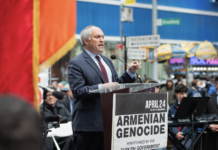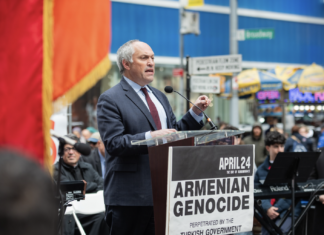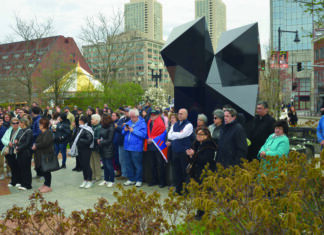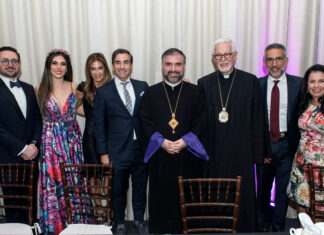By Syuzanna Petrosyan
CAMBRIDGE, Mass. (CivilNet) — As dozens of research groups around the world race to create the first vaccine for COVID-19, in late February, Moderna, a Massachusetts-based biotechnology company, announced that it had shipped the first batch of its clinic-bound vaccine, called mRNA-1273, to the US National Institute of Allergy and Infectious Diseases for use in a planned Phase I study. (See story on this page.)
The vaccine will be tested on 45 healthy patients at the Kaiser Permanente Health Research Institute in Seattle.
Moderna’s researchers were the first to create trial-ready vaccines using mRNA technology. The company uses messenger RNA (mRNA), a form of genetic material, to deliver instructions to a person’s cells. From this information, cells make requisite antibodies to protect against viruses. Alternatively, the instructions can also be utilized to instruct cells to produce proteins that are missing in particular diseases.
To understand the work behind Moderna’s early success, CivilNet spoke with the company’s co-founder and chairman Dr. Noubar Afeyan, a member of the MIT Board of Trustees, and a biotech entrepreneur. Afeyan is a philanthropist, most recently as a co-founder of the Aurora Prize for Awakening Humanity.
Syuzanna Petrosyan: In the case that testing is successful, what is a realistic timeline for approval and availability of the vaccine? And, in times of crises such as this, are procedures accelerated?










